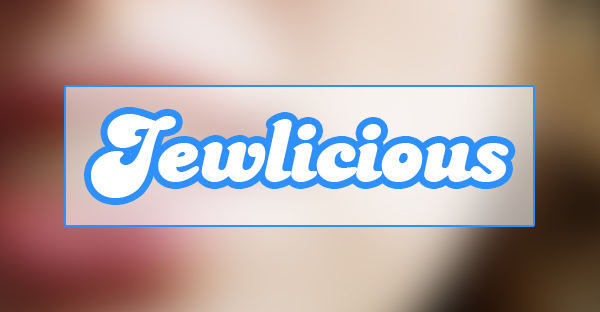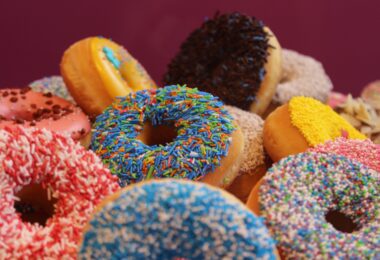Oh Joshua, I’m sorry. I’ve done you wrong. I’m metaphorically standing here, barefoot, in my penitent hair shirt, willing to throw myself at the mercy of your kind heart, oh Joshua.
Oh Joshua, you have me sitting here on a sunny Sunday morning, sipping fairtrade organic Ugandan hot chocolate, still not sure how to explain myself. Not that it mattered. I’ve erred.
Oh Joshua, I’ve admired you since I read a book you co-authored. That was long before I knew what Heeb was or had heard about Jewlicious or before we, briefly, met in person at Kelsey‘s last year. Oh Joshua, I considered you a genius in the long line of tradition of Jewish satirists; a rightful heir to Heine and Tucholsky, you made me smile to myself as well as laugh tears.
Oh Joshua, I know satirists don’t always have it easy. Heine and Tucholsky both lived in exile. And you as well have often been under attack from those that are ignorant of the stylistic devices and aims of satire, namely the use of exaggeration, clichés, sarcasm and irony to draw attention to and criticise a certain issue.
But then, oh Joshua, people complained you / Heeb had gone too far. Readers who usually are not delicate asked for Jewlicious to comment on a photograph that, so they claimed, was tasteless.
I took a look at that photograph and was quite confused, oh Joshua. It depicted a woman with a Charlie Chaplinesque moustache removing a non-greased, and non-lined tray of made-to-look-burnt light coloured gingerbread people from an oven. The earrings paired with the black, tied back hair make me think of one of the Sinte musicians that live not too far from here.
But then the accompanying text told me that woman wanted to be dressed as Adolf Hitler during the photo shoot, and the made-to-look-burnt gingerbread people are supposed to be Jews.
Funny? Not so much. Satirical? Not at all. Tasteless? Wholeheartedly, yes.
Oh Joshua, I was shaken. How could this possibly be? Had I not experienced you as smart, considerate, well-mannered young man? Had I not even been mocked by our dear friend CK for calling you cute? Was I supposed to agree with your critics and have my idol of all that is good and compelling about NYC Jewry be demounted from his pedestal?
Oh Joshua, with the almost religious fervour of a mother that wants to believe that her son who was caught red-handed is not guilty, I started making up scenarios of “What ifs?”, scoured dictionaries and history books for traces of a pun I, as a non-native speaker of English, might have missed, something that was going to shed some light onto the motivations behind publishing that photograph, something that would qualify the content of the picture as the satire it was labelled to be…
Oh Joshua, distraught, I resorted to the mind-numbing task of renovating my place, inhaling as much cellulose thinner as possible to kill the pain of a disappointed heart. This atrocity of a pastry only just added insult to injury.
Oh Joshua, had I not stripped off several rooms of its wallpaper, and had not German insulating habits have it that new wallpaper is always glued on top of the old one, leaving me to remove seven layers of wallpaper dating back to the 1950s, I might never have understood and I might well have sworn off anything that has to do with NYC Jewry.
Oh Joshua, 212-genius, how could I have been so blind? How could I not see the various topical layers in that photograph? How could I miss the Kafkaesque properties of this absolutely brilliant piece of satire? How could I fail to read the metaphors?
Oh Joshua, please let me share my insights with our readers that were critical of Heeb for publishing that picture, so they, too, may acknowledge not only the satirical qualities but also the brilliance of that work of art.
What we see in that picture, which appears to be slovenly done at first glance, props missing etc., can easily fool people into believing it’s tasteless; a woman dressed up to look like Hitler removes a tray of burnt gingerbread people from an oven; the gingerbread people are called “Jew Cookies”.
If we care to take a closer look at the picture though, we’ll see that there is much more to it:
the woman with the moustache, who by the description of her behaviour in the text appears to suffer from emotional issues, and who dons a gypsy-esque ado, represents, in personal union, the victims of the Euthanasia. The cross-dressing reference of the moustache honours the homosexual victims, the gypsy earrings represent the ethnic minorities that were killed during the Euthanasia, foremostly Sinti and Roma, the red colour of the apron stands for Communists, the Charlie Chaplin reference reminds us of those artists whose art the Nazis classified as “degenerate”, whose works were banned, confiscated, and destroyed, and who were annihilated during the Euthanasia if they couldn’t escape Reich territory in time, and finally, that woman herself is representative of those victims suffering from mental conditions – going by what the article says about her. (Who is she? A poster woman for some charity like HASC? Argh, I’m too lazy to google…)
I dare say that’s pretty ingenious. But it gets even better: the gingerbread people are on a non-greased, non-lined tray. This reminds us of that camp inmates suffered from malnutrition / starvation and had to sleep without blankets.
There are eight gingerbread people. As we all know, “H” is the eighth letter of the Latin alphabet – “H” as in “Hitler”. The number eight thus conveys the warning to all Nazis that they, too, could as well at some point become the victims of random mass killings.
Also, the non-greased and non-lined tray will make the cookies fracture easily. Anyone who has ever made gingerbread people knows that they tend to break at the neck even if you remove them carefully from a lined tray, leaving the head on the tray. Head on the tray -> head on a shiny tray -> head on a silver platter -> Judith and Holofernes & Salome and John the Baptist = compassion with Christian pacifists that died in the camps & Jewish women that showed extraordinary courage in the face of sheer horror.
Sooooooooo, what the picture really tells us it that compassion with the Nazis’ other victims should also be part of Jewish remembrance.
The cake recipe I linked to above goes in line with my explanations. First I thought it was just a bad recipe, the kind you get when you have inexperienced bakers throw together everything they believe must taste good, killing the flavours in the process. It also appeared to be ignorant of German pastry recipes and ingredients commonly used; Van Houten’s cocoa from the Netherlands actually is the very best you can get for baking, you don’t need baking soda if you use baking powder vice versa if you also use an acidic ingredient (e.g. coffee), you never use more than a pinch of salt in sweet pastries (a pinch is the amount you can hold between the tips of your thumb and forefinger pressed together), buttermilk (any milk for that matter) takes the delicate fluffiness out of sponge cakes and makes them too soggy, you don’t use regular chocolate for covering a cake but couverture (May I suggest Scharffenberger’s in the US?), corn syrup is used in cattle food only in Germany, there are just cherries in juice and none of those yucky tart cherries, chocolate mousse isn’t made with double cream and cocoa but with eggs, whipped cream, 70% dark chocolate, sugar and some liquor to taste, but I digress.
Basically, the recipe struck me as a lousy one. But then it appeared to me that the corn syrup – which is famously used in a caffeinated beverage in the US, as opposed to most other countries, where actual sugar is used – is not kosher for Pessach, so it stands for the hardships American Jews feel in their diaspora position, the taste of not quite living up to their Jewishness as much as they could yet not being enough Old World to experience a full cultural sphere to themselves (as opposed to the Chasidim). Therefore, the corn syrup, the tart cherries etc. symbolise the difficulty of bridging the gap between what was in Europe and what is in the American diaspora and what could be being either Chasidic or living in Israel. The cultural insecurity is also emphasised by the soft glaze whereas a real German cake would come with a solid glaze.
Phew… Brilliant, don’t you think?
Oh Joshua, initially, I was tempted to ask you why this particular issue wasn’t called the “Third Reich Issue” as it seems so focused on the past, so removed from Germany as it now is more than sixty years later. But I was wrong in thinking so. I now see the relevance of those topics to the presence. Oh Joshua, I’m awestruck.
Oh Joshua, I doubted you. I was wrong. Will you forgive me?
Pretty please.
Oh Joshua.






What the fuck do you want?
It’s all in there.